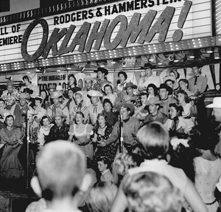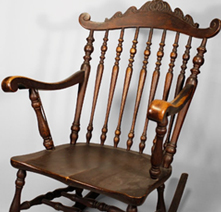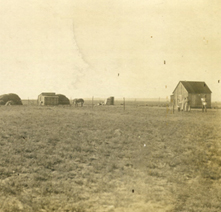
Sam Noble Gallery
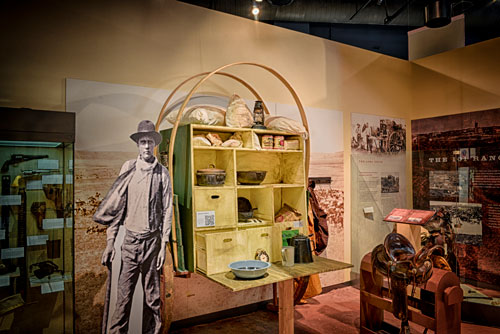
The Sam Noble Gallery highlights Oklahoma’s early history, and features rotating exhibits on various topics. Through artifacts and images, visitors can relive the experiences of settlers, farmers, and cowboys. The Oklahoma Centennial Farm & Ranch Program section recognizes families who have continuously occupied their land and carried out farming or ranching operations for at least 100 years. The law and order section explores early lawmen and outlaws and law enforcement today. while a replica sod house, a 1930s-era house, and a 1950s pink kitchen give visitors a window into how Oklahomans lived.
Inaugural Impressions
The newest exhibit in the gallery features an array of gowns worn by first ladies from the Oklahoma Historical Society collections. Inaugural Impressions explores the lives and contributions of Oklahoma’s first ladies and gentleman while their spouses served as governor. Learn more about this exhibit and Oklahomas first ladies and gentleman.
Curators’ Corner
Oklahoma-Built Excellence: GM OKC aims to tell the story of the Oklahoma City General Motors plant and its employees.
Through a timeline, archival newspaper prints, artifacts, and photographs, visitors will learn the history of the plant and its contribution to the economic growth of Oklahoma City and Oklahoma as a whole. The Oklahoma City plant provided an estimated 7,500 local jobs outside the plant, with an additional 2,600 jobs inside the plant. The exhibit looks at the growth provided by General Motors and what happened to the employees following its closure.
Curators’ Corner highlights recent museum donations or artifacts specially chosen by the curators for the unique stories each item tells. The artifacts in Curators’ Corner rotate periodically.
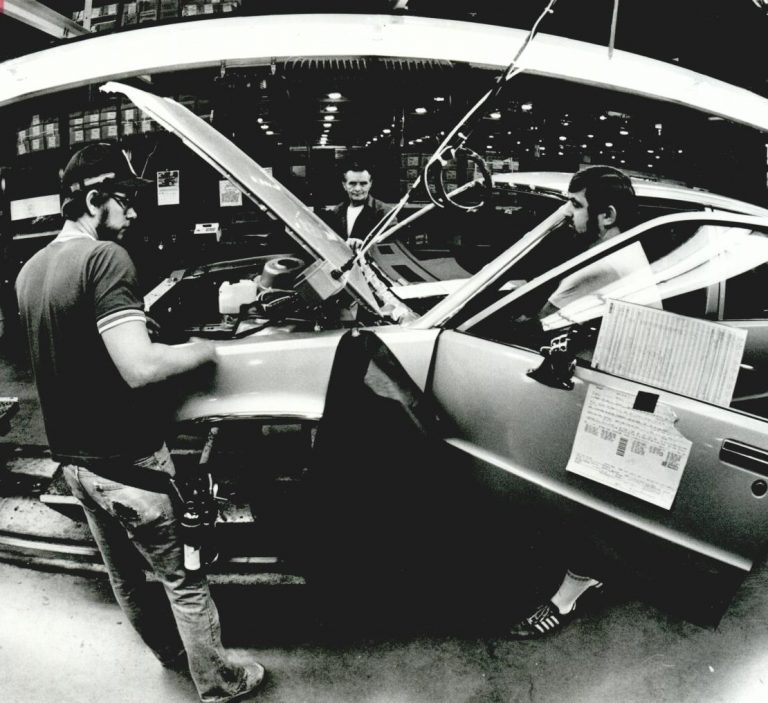
Line workers from left, Greg Raymo, Herb Weldman, and John Berisko, check the electrical system on a 1982 Chevrolet Citation at the General Motors Assembly Division plant in southwest Oklahoma City (2012.201.B1078.0405, Oklahoma Publishing Company Photography Collection, OHS).
Rodgers & Hammerstein’s Oklahoma!: The Birth of Modern Musical Theatre and a New Image for the State
Based on the 1931 play Green Grow the Lilacs by Claremore native Lynn Riggs, Oklahoma! was the first musical written by the legendary team of Richard Rodgers and Oscar Hammerstein II. Rodgers and Hammerstein’s Oklahoma! began a new era in American musical theatre. It also began the most successful songwriting partnership that Broadway has ever seen.
Oklahoma! premiered on Broadway at the St. James Theatre on March 31, 1943, and closed after 2,212 performances. Set in Indian Territory just after the turn of the twentieth century, the spirited rivalry between the local farmers and cowboys provides the backdrop for the love story between Curly, a handsome cowboy, and Laurey, a beautiful farm girl.
The title of the History Center exhibit makes reference to a “New Image for the State.” In 1939 John Steinbeck published his Pulitzer Prize-winning novel The Grapes of Wrath, a fictional account of the mass migration of thousands of “Okies” from Oklahoma to California in search of jobs, land, dignity and a future in the shadow of the Great Depression. The novel cast an image of hopelessness, bank foreclosures and economic hardship on Oklahoma. Rodgers and Hammerstein’s Oklahoma! counteracted this image with its lively musical comedy that, despite a few fight scenes that include an accidental death, portrayed romance, laughter and a spirit of joy in direct contrast to the storyline of The Grapes of Wrath.
Explore More with Google Arts & Culture
Visit the Oklahoma Historical Society on Google Arts & Culture to learn about playwright Lynn Riggs, the early history of the state, and the lasting impact of the musical Oklahoma!

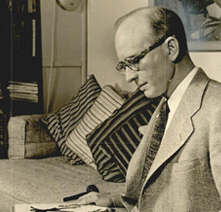 Lynn Riggs
Lynn Riggs